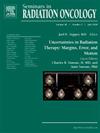Unraveling the Myth of Radiation Resistance in Soft Tissue Sarcomas
Abstract
There is a misconception that sarcomas are resistant to radiotherapy. This manuscript summarizes available (pre-) clinical data on the radiosensitivity of soft tissue sarcomas. Currently, clinical practice guidelines suggest irradiating sarcomas in 1.8-2 Gy once daily fractions. Careful observation of myxoid liposarcomas patients during preoperative radiotherapy led to the discovery of this subtype's remarkable radiosensitivity. It resulted subsequently in an international prospective clinical trial demonstrating the safety of a reduced total dose, yet still delivered with conventional 1.8-2 Gy fractions. In several areas of oncology, especially for tumors of epithelial origin where radiotherapy plays a curative role, the concurrent application of systemic compounds aiming for radiosensitization has been incorporated into routine clinical practice. This approach has also been investigated in sarcomas and is summarized in this manuscript. Observing relatively low α/β ratios after preclinical cellular investigations, investigators have explored hypofractionation with daily doses ranging from 2.85-8.0 Gy per day in prospective clinical studies, and the data are presented. Finally, we summarize work with mouse models and genomic investigations to predict observed responses to radiotherapy in sarcoma patients. Taken together, these data indicate that sarcomas are not resistant to radiation therapy.

 求助内容:
求助内容: 应助结果提醒方式:
应助结果提醒方式:


